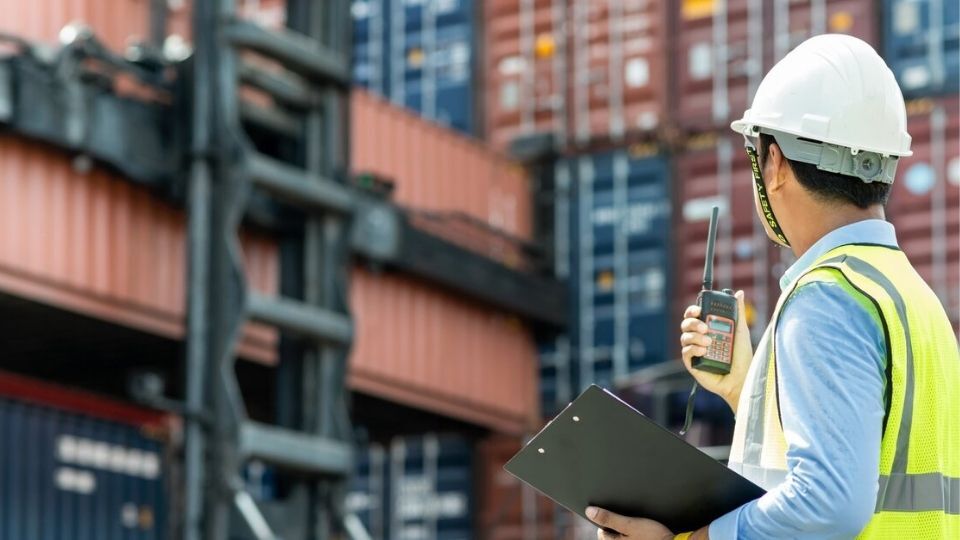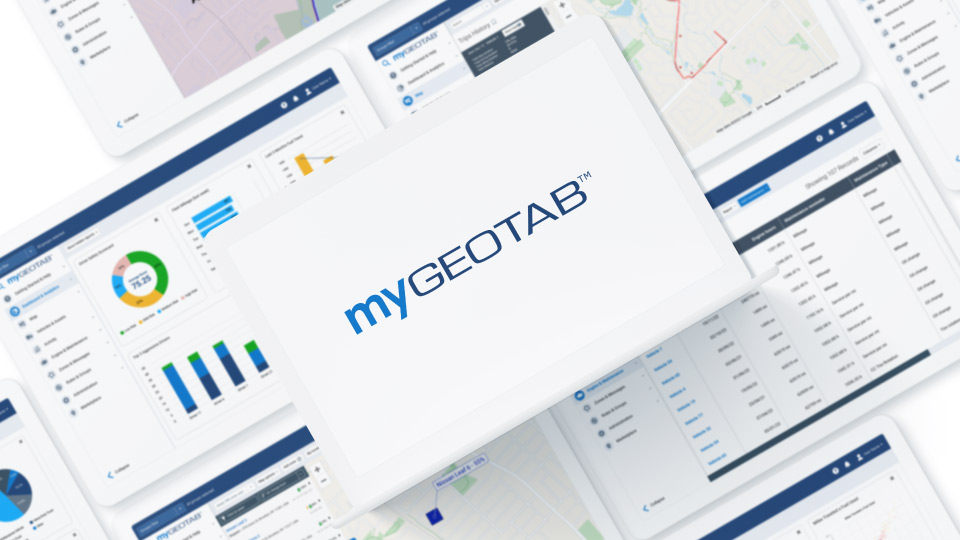Law enforcement technology: Four trends to know for 2026
Learn how recent trends in law enforcement technology can apply to your police fleet and see how amid change, departments are staying dedicated to people-centered practices.
%20Photo.jpg)
Nov 12, 2025

Key Insights
- Although AI and data are dominating law enforcement technology news, effective policing will always hinge on human oversight and compassion.
- Four major law enforcement technology trends can be applied to your police fleet for stronger public service, more reliable vehicles and safer officers.
- Build greater community trust by using fleet-driven solutions to enhance transparency and accountability.
Over the last 100 years, we’ve seen enormous changes in policing. Advances in law enforcement technology have helped police fleets become more data-driven, operationally ready and agile, but where is the industry headed next?
I’ve always been fascinated by this question. And although I’ve seen innovation drive smarter public safety in countless ways throughout my career, one reality is becoming clear: With AI and data, the next decade of policing could be poised for more transformation than ever before. To better understand law enforcement’s future, I recently attended the 2025 International Association of Chiefs of Police (IACP) conference. From the workshops and discussions, it was clear that the industry is keenly focused on using technology for data-driven decision-making, officer support and community transparency.
But amid these tech-driven shifts, a core message from the event remained constant: Policing must always stay centered on empathy and human oversight. In this post, we’ll show you how themes from four major industry trends can be applied to your fleet for optimized operations, all while your department prioritizes these critical human elements of the job.
1. Data insights are driving smarter law enforcement.
An industry-wide shift to data-driven policing is profoundly transforming how departments manage their fleets. Fleet insights support sound decision-making, especially in situations when every second counts. Today, many departments today are using them for:
Swift and decisive actions - Communities expect their public safety teams to be ready to help them as soon as they place the call. But without dependable police vehicles, operational readiness is at stake. Fleet data can help your team stay prepared by allowing you to accurately predict maintenance needs, reduce breakdown risk and limit unplanned downtime.
In the words of Robert Martinez, retired Deputy Commissioner for the NYPD: “By reducing the risk of breakdowns, officers can focus on their critical duties without vehicle issues. Data-driven efficiencies enhance both operational effectiveness and officer safety.”
- Better budgeting - Fleet data can also help your department cut costs. For example, tracking fuel consumption and idling allows your team to monitor the results of fuel-saving initiatives. Additionally, utilization data and engine hours provide a complete picture of vehicle wear and tear, enabling your department to plan smarter service schedules, replace parts before failure and avoid costly new vehicle purchases. By saving on fuel and maintenance, you can reinvest funds into other areas that benefit public safety, such as recruitment, training programs, overtime for specific projects or additional equipment.
- Equitable patrolling - Data insights promote fairer distribution of patrol resources. For example, your department can use Esri GIS mapping and overlap this with Geotab to track patrol completion percentages, spot imbalances and increase police presence as needed in underserved areas.
As law enforcement enhances public service with fleet insights, leaders at IACP 2025 stressed the importance of responsibly using data and AI. In your operations, make sure everyone from officers to the community and city council are aligned on how all fleet data will be collected and studied, with clearly defined policies to prevent misuse.
2. Integrated technologies are being used to support police officers.
Officer health and wellness is another essential priority for law enforcement today, and it was a key theme discussed at IACP 2025. While data helps law enforcement protect the community, integrated fleet tools are playing an important role in protecting officers. By bridging the gap between dispatch and the front line, connected solutions are helping departments:
- Maintain duty of care - Officers face multiple stressors at work, but the reliability of their vehicles should never be one of them. By using vehicle insights to detect problems earlier, predict component lifespans and replace them before failure, your department can shoulder the burden of vehicle maintenance on behalf of officers and provide them with more reliable assets. The result: A frontline team that feels more supported and looked after.
- Enhance officer safety - Manual, disconnected solutions delay response and risk detaching command from your front line during emergencies. But by integrating fleet management tools and lone worker applications, gain a complete picture of officer safety, both inside and outside of the vehicle. If an officer suffers a medical crisis, provide faster backup and medical support by finding where they and their vehicle are within a single solution.
- Exonerate officers with undeniable truth - Beyond physical safety, integrated fleet tools can help protect officers’ reputations. If a collision occurs, footage from road-facing cameras can be paired with vehicle data and patrol histories for a clear-cut, verifiable trail of events. Through a unified evidence solution, your department can reconstruct collisions, gain crucial incident context and clear officers from unfounded allegations.
Due to intrusion concerns, fleet management technologies have often been met with union resistance. If your department is struggling to generate fleet solution buy-in, reduce opposition by helping officers understand how these tools can work with existing technologies, guide smarter decisions and be used to protect them.
3. AI will transform policing, but it must be used with care.
While officer sentiment around fleet management is changing, so are their notions about AI. According to 2025 research, almost 90% of surveyed officers are in favor of AI being used by their agency. However, leaders at IACP 2025 highlighted the crucial need for guardrails, from privacy to bias prevention. No matter if their AI tools are public-facing or in the fleet, departments need to:
- Develop a proper governance strategy - Before adopting AI, your department must establish policies that outline exactly how the technology will and will not be used. This requires deep research into how AI solutions collect data, interpret it and work to avoid bias. All employees must also be trained on how to properly use them, with oversight panels conducting regular audits to verify accountability.
- Overcommunicate - When creating internal AI policies, you should stay in constant contact with officer unions to avoid contract noncompliance. For example, if your department wants to use driver-facing AI dashcams, you must make sure that unions are not just aware of them, but active participants in setting guidelines around their use. Through collaboration, transparency and clear communication, you’ll help turn skepticism into support.
- Verify policy alignment - While vetting a solution, you must also consider the AI stance of the company that produces it. Do they have their own set of AI guidelines? What measures do they take to mitigate bias? If your department is considering a new technology, make sure the answers to these questions closely align with your own AI principles.
AI offers significant potential to help public safety teams enhance investigative work, operational efficiency and officer safety. However, its ethical deployment and strict accountability are non-negotiable. With rigorous governance, robust security controls and transparent communication, your department can make sure AI is solely used for one purpose: Protecting and serving the community.
4. Digital tools are helping departments build stronger community trust.
Building stronger community trust is a constant, long-term challenge. At IACP 2025, there was a strong focus on how technology can help law enforcement show the public what they’re doing to remain accountable. And within the fleet, digital tools are becoming essential for fostering this public trust, helping departments:
- Contextualize events - Body camera footage offers powerful insight into law enforcement operations, but it stops short of showing where vehicles are or how they’re being driven. To fill in these missing gaps, your department can rely on fleet insights. For example, Belleville Police Service used Geotab to prove that an officer was using their lights and sirens while speeding to an incident and resolve a citizen complaint.
- Demonstrate fiscal responsibility - Spotting and curbing budget drain doesn’t just help your department save money. It also helps you prove to the public that you’re going above and beyond to spend responsibly. Build greater trust with your community by explaining how fleet tools are helping every taxpayer dollar go further, from limiting unnecessary idling to optimizing maintenance.
- Protect their reputations - Consistent service builds trust and proactivity is your department’s best liability defense. Thankfully, digital tools can help you avoid incidents before they happen. For instance, Geotab’s Risk Analytics allows you to analyze and reduce collision likelihood across your entire police fleet. Additionally, temperature monitoring systems can help keep your K-9s and detainees safe by sending automatic alerts if the cabin climates reach dangerous levels.
At IACP 2025, discussions focused on the importance of pairing technology with effective communication. Build greater confidence in the work your department does by telling stories from officers’ perspectives and sharing how tools like fleet solutions are helping them do their jobs even better.
Helping those who help people: Geotab’s commitment to your team
As law enforcement technology advances, Geotab is dedicated to empowering departments with safer, smarter and more reliable police fleets. We don't just build technology; we partner directly with real frontline teams, using their operational feedback to constantly shape our latest tools and systems. With Geotab, you get:
- Deep, actionable fleet insights - Study safety, vehicle utilization, fuel consumption and maintenance data for a complete view of your police fleet.
- Rich customization options - Use third-party integrations to enhance your existing technologies and create a tailored, all-in-one public safety solution.
- Stringent data security - Rely on our FedRAMP-authorized platform, built-in Restricted Data Mode (for take-home vehicles) and FIPS 140-3 validated hardware to meet complex security and privacy requirements.
- Expert support - Whether you need advice on the right fleet tools to use or more advanced technical support, count on Geotab for personalized recommendations.
We understand the operational struggles: How to implement powerful new technology without sacrificing your officers' human-first mission. The answer lies in reliable, intuitive tools that support their work, not complicate it. By deploying a solution like Geotab, you can directly boost officer capability, enhance their safety and maintain a state of immediate readiness to serve.
Learn more about Geotab’s public safety solution by checking out this blog post.
Subscribe to get industry tips and insights
Frequently Asked Questions
Trends in law enforcement can help you:
- Stay updated on the latest ways to reduce costs, improve vehicle performance and remain operations-ready.
- Learn powerful fleet strategies used by other departments to provide better public service and build trust.
- Discover how to create an AI fleet management policy that complies with both department objectives and union stances.
- Understand the full landscape of modern fleet tools, so you can choose the best solution possible for your department.
Police fleet management training is becoming easier and more accessible with tools like telematics. Today’s top telematics solutions offer capabilities that help you measure risk, gauge vehicle health and track fuel consumption, giving you all the tools you need in a single platform. Plus, quality telematics providers will offer detailed product guides, a rich knowledge base and expert support to make sure you know how to use the platform to its fullest potential. Master this technology to level up your fleet management knowledge and run a safer, more reliable police fleet.
Geotab’s telematics solution can help you extend your police vehicles’ lifespans, limit downtime and drive ROI with data-driven maintenance. Use features like these for smarter servicing:
- Predictive maintenance - Reduce breakdown risk with tools that help teams forecast component failures and replace them in advance.
- Remote diagnostics - Learn about critical issues promptly through real-time fault code alerts.
- Automated reminders - Avoid missed routine maintenance with service schedule reminders for each vehicle in the fleet.
For a deeper dive on police fleet maintenance with Geotab, check out this playbook.
%20Photo.jpg)
With extensive experience in the public safety sector in the UK and now calling Canada home, Nat has been a passionate advocate for the integration of innovative technology solutions to enhance public safety operations. Nat has delivered localized end-to-end telematics and technology services to various agencies across North America, significantly improving operational efficiencies and safety for these public safety teams. As a speaker at many telematics and technology conferences, Nat is a huge supporter for the responsible use of technology to benefit front-line public safety operations. Leveraging technology to ensure public safety teams work more safely and with greater transparency is a key part of Nat's role here at Geotab.
Table of Contents
- 1. Data insights are driving smarter law enforcement.
- 2. Integrated technologies are being used to support police officers.
- 3. AI will transform policing, but it must be used with care.
- 4. Digital tools are helping departments build stronger community trust.
- Helping those who help people: Geotab’s commitment to your team
Subscribe to get industry tips and insights
Related posts

The True Cost of Cargo Theft: When Customer Trust is on the Line
November 24, 2025
2 minute read


Four seasons of fleet intelligence with Geotab's Public Works solution
November 7, 2025
2 minute read

Infographic: What are the ripple effects of school bus driver turnover?
November 6, 2025
1 minute read


Slash fleet costs: Key strategies for a stronger police budget
October 14, 2025
5 minute read